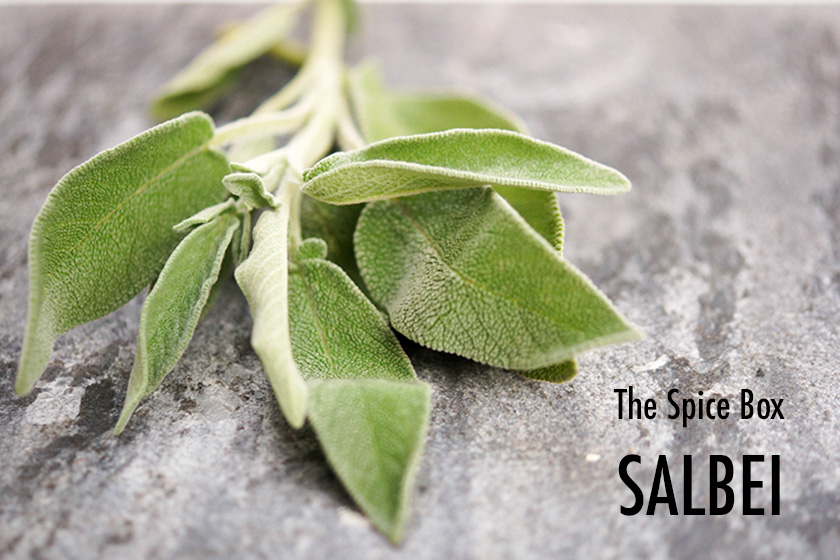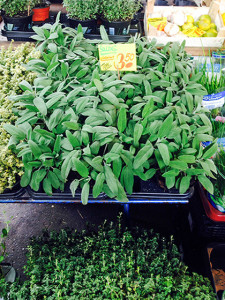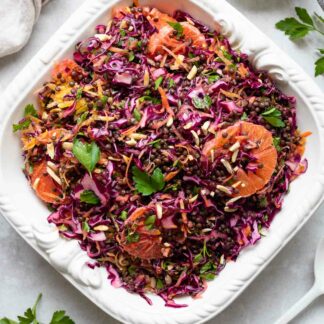
In Greek mythology, sage was believed to be a powerful protector and healing agent that was sacred to the gods.
It was also commonly believed to strengthen the memory, hence “a sage”, or wise man with a many memories and profound wisdom. Seeking immortality? According to Medieval folklore, all you have to do is take a little sage each day (especially in May!). There is also the ancient art of burning sage, which is also practised today. “Smudging” ceremonies are performed to purify and cleanse your home and negative energy and influences.
ORIGIN & FLAVOR PROFILE:
Sage is native to the northern Mediterranean coast and frequently used in Mediterranean cooking. It’s long slender leaves have a uniquely fuzzy texture and musty flavor reminiscent of eucalyptus, cedar and mint with a hint of lemon. It combines well with rosemary, thyme or marjoram. Careful though, it should be used with discretion, as it’s flavors can quite easily overwhelm a dish.
HEALTH BENEFITS:
There are a number of health benefits associated with sage:
- As a mouthwash, it is said to freshen the breath and help in alleviating sensitive, bleeding gums.
- In a bath, it’s oils helps reduce inflammation and ease rheumatism and aching limbs.
- Due to its antiviral, antibacterial and antiseptic properties, it’s known for its ability to kill bacteria.
- As a seasoning, not only does it flavor food, but is said to prevent spoilage. Plus it’s rich in vitamin K, which is important for bone health.
- It also aids digestion, reduces high blood sugar and remedies night sweats.
- Sage tea is also a great remedy for soothing a sore throat.

CULINARY USES:
Sage’s aromatic and strong flavor compliments game, pork, beef, duck, chicken and as well as the stuffing that’s served along with it. It’s a great companion to pretty much any fatty food as it aids in digestion of greasy foods. How can you not love an ingredient that loves fat? It’s perfect partner for foods rich in oils and fats. It also blends well in sauces, soups, meat pies as well as with mild cheeses and vegetables such as onions, carrots, eggplant, squash, and tomatoes.
If you have more fresh sage than you know what to do with, here’s a simple and tasty recipe (otherwise, try drying it!):
Butter and Sage Sauce
A browned butter and sage sauce goes perfectly with gnocchi or your favorite pasta.
Serves 4
INGREDIENTS:
6 tablespoons butter
10 large sage leaves, finely chopped
juice of half a lemon
1/3 cup grated parmesan, plus more to garnish (35 g)
METHOD:
While the pasta cooks, melt the butter in a non-stick skillet over medium heat; cook until light golden brown in color. Add the sage leaves and remove from heat. Add lemon juice and set aside. Drain the pasta, reserving some of the cooking liquid. Add the pasta to the pan and return to heat. Add a little of the cooking liquid, then the cheese, toss to coat and serve immediately. Garnish with additional parmesan and enjoy!
This is a classic. So simple and so so good!




